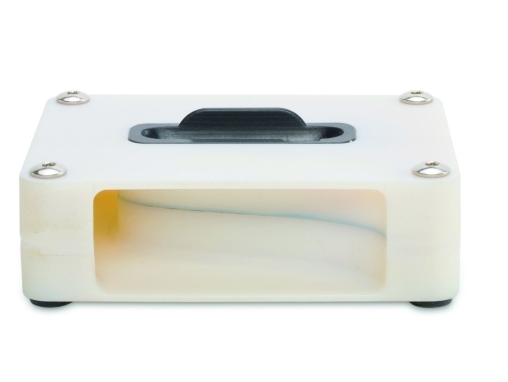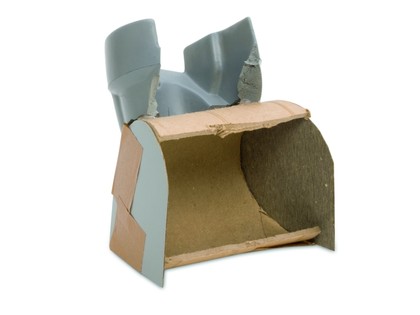
How does a hardware firm go about planning, developing, testing and marketing a new product?
The process involves multiple disciplines, including research and design through to project management and marketing expertise.
To find out more about how everything comes together, MacFormat magazine spoke to the following folks from Griffin, which makes peripherals for the iPhone and iPod:
TC: Tim Coble, Category Management Manager
GC: George Campbell, Director of Industrial Design
JC: J. Curtis, Project Manager
JF: Jennifer Fisher, Marketing Manager
WW: Web Webster, Senior Copy Editor
JG: Jamin Guy, Software Category Manager
MacFormat: How does the process begin?
TC: Regardless of where the idea originates, the front end of the process is wide open; any one at Griffin can pitch a new product idea by writing up a one-page concept summary and presenting it to the team in a weekly product development meeting. That group bats it around, beats it up and decides whether it has enough potential to warrant further exploration.
TC: A great product idea can come from anywhere. We all use and love the technologies that we build products to support, so sometimes we're just creating solutions that let us use our iPods and iPhones to do the things that we want to do. We also interact constantly with our customers to learn about their needs and pain points. Other times, we find an exciting technology and come up with unique, innovative ways to apply it to create solutions.
Sign up for breaking news, reviews, opinion, top tech deals, and more.
JC: The Griffin process is fairly organic. Ideas come from anywhere inside the company, and a few from outside. Usually a product starts as a cubicle-side discussion or a napkin drawing (or dry-erase whiteboard drawings as we have LOTS of those around the office). Or, the more fanciful answer? We have an Idea Tree for Monday/Wednesday/Friday and a Suggestion Troll for Tuesday and Thursday.
WW: We're nosey people by nature, so we do a lot of prowling around in Product Development to identify what's next, what new ideas are bubbling up. Software development is always playing with something.Or one of the project managers is about to solve some problem about connectivity. We like to be there when the idea happens. Officially, however, marketing engages in the product-development process about the same time a product idea is green-lighted to move from a purely conceptual stage to early prototyping.

STARTING OUT: An early prototype of the Griffin AirCurve
GC: At Griffin, ideas come from a variety of sources. Most often, we find a "problem" with a technology that needs fixing, and work to find a solution to that problem. The first Griffin product, a video adaptor that allowed a PC monitor to connect to a Macintosh computer, was just this kind of solution. Another common starting point is when a product frustrates someone. Frustration is often the mother of invention. We have an organisation that allows for ideas to come from anyone – inside the company or out – and then we evaluate the idea to see if it will make a viable Griffin product.
JF: At Griffin, we truly believe that an idea can come from anywhere! From Engineering to Accounting, from Sales to Shipping; everyone at Griffin is encouraged to freely share product ideas. Of course, product ideas can also come from outside of Griffin. I've seen products concepted out of the question: 'Wouldn't it be cool if?'and begin to take shape as a loose sketch or mock made of random bits of materials. The official product-development process begins with a concept product 'one page'.
JG:The AirCurve process began when I was sitting at home listening to music on my iPhone and thought there must be an easy, powerless way to amplify the sound.

DEVELOPING IDEA: A stereolithograph prototype, made of medium-density polyresin
MF: What's the next step?
TC: An idea that passes the initial "sniff test" gets assigned to a Category Manager, who shepherds it through a more formal proof-of-concept process. They discuss it with industrial designers, engineers, user researchers, the sales team, even packaging. The goal is to thoroughly vet the product to make sure that it's a good fit with our customers, our capabilities, our strategic priorities, our distribution channels and our financial requirements, before it gets the green light for resources to be allocated.
JC: We poke the idea and see if it screams while asking, "Will people really like this?" or "Does this fill a need?". Finally, it mostly comes down to "Would I buy this?"
GC: Once an idea is had, we quickly try to build some assumptions around it, such as: how many people have this need? What kinds of solutions already exist for this? How could we solve this problem? What would our solution cost? And so on. By quickly vetting a concept, we can decide if and how we should move forward. This is the beginning of the product-development process – we then push the "GO button."
JF: If the product idea passes the myriad of internal scrutiny, and given the go, a category manager is assigned and will manage the product through its life cycle.
JG: Next I came to the office with the powerless amplifier idea and started making a prototype with Andy, another software developer. The first prototype worked well enough to continue research and development.
MF: What then? Take us through the process...
TC: Once a project gets the official go, the fun starts. Typically, our Industrial Design team kicks off the design process by creating sketches, renderings, 3D models and so forth. It's an iterative process that incorporates a wide range of inputs and helps us refine our ideas of what the product will look like, how the user will interact with it and what basic feature-set it will have. This is key because by the time the product gets handed off to the next teams – the mechanical engineers, electrical engineers, software/firmware engineers and prototypers – the spec needs to be in a near-final form.
TC: The further a product proceeds through the process, the more activities begin to happen in tandem. The Project Manager takes the lead in coordinating each of the internal design functions and preparing the product to make the transition from design to production. We work with different manufacturing resources depending on the type of product being made, and it's vital to make sure that they have all of the necessary information to produce the product exactly as we have designed it.
TC: While the Project Manager oversees things like design, production and packaging, the Category Manager continues the advocate role by working with the Sales and Marketing teams to find homes for the product and to make sure that it gets positioned effectively. So by the time finished units are coming off the line, we know where they're headed and have a clear-cut launch plan. Once a product is shipping, it's largely in the hands of our Production and Sales team. We'll monitor its performance and look for opportunities to improve it in subsequent generations, until eventually we determine that it has run its course and is ready to be replaced by the next great Griffin product.
JC: Griffin has a full roster of service bureaus in-house; industrial design, electrical, mechanical, packaging, QA and marketing will all have a hand in the design and execution of the products.
GC: Griffin's product development happens much like any other product development, but with a few small but significant differences. Like most product development, we start with "blue sky" concepting – quick sketches of various solutions or forms of a given product. From there we join our industrial design concepts with our in-house engineering to push the project into a manufacturable state. The differences that make Griffin's process effective include: a strong in-house team of designers, engineers and marketing talent, a strong speed-to-market awareness and thinking, and strong technological competency. We do almost all the development from our home office in Nashville.

FINAL PROTOTYPE: This model had a rubber gasket for airtight sound
TN: The industrial design, mechanical engineering, electrical design, marketing, packaging and more. Having these cross-functional teams within one space allows for faster decision-making, better communication of content and context, and a richer working relationship among the various disciplines.
JF: Once a Category Manager takes an idea and creates a 'project', the collaborative work begins. Marketing works to position the product within the brand offering, create packaging and define and begin executing a clear launch plan for the little jewel. Industrial designers, mechanical and electrical engineers work to create a 'proof of concept' and refine, refine, refine. Once we have the final design and feature set, product production and testing begin. If Griffin's Quality department gives the product a pass, full production begins. At this stage, we begin shipping to our sales channels. Marketing promotes the product, and we continue to replenish our retail partner's pegs or shelves until the product is retired for the next great Griffin innovation to take its place.
JG: The AirCurve project didn't really follow the normal protocol and was under the radar for most of the development process.